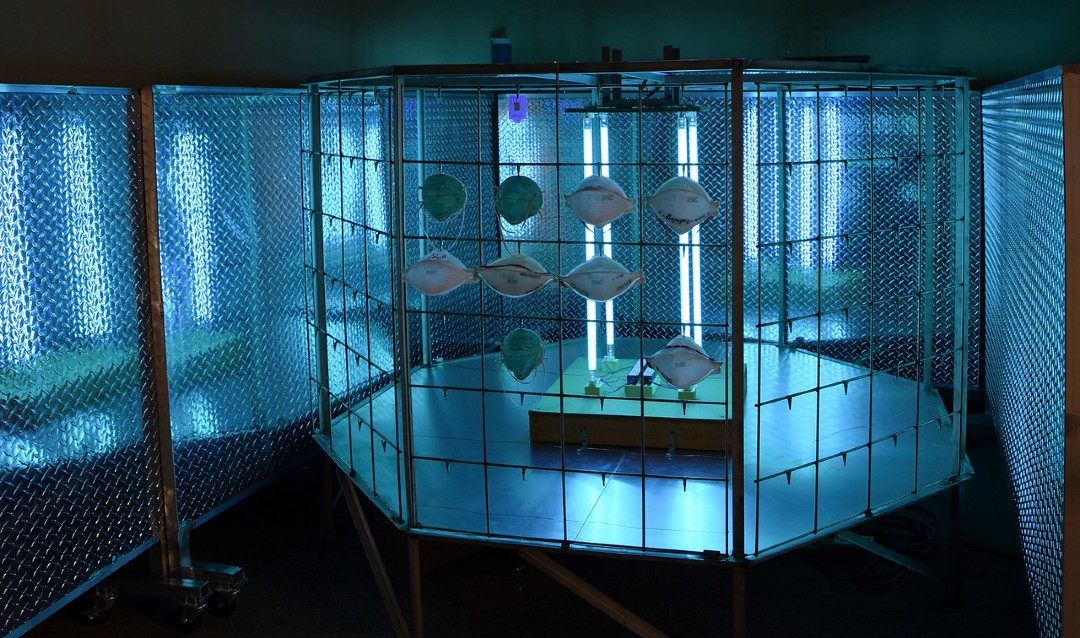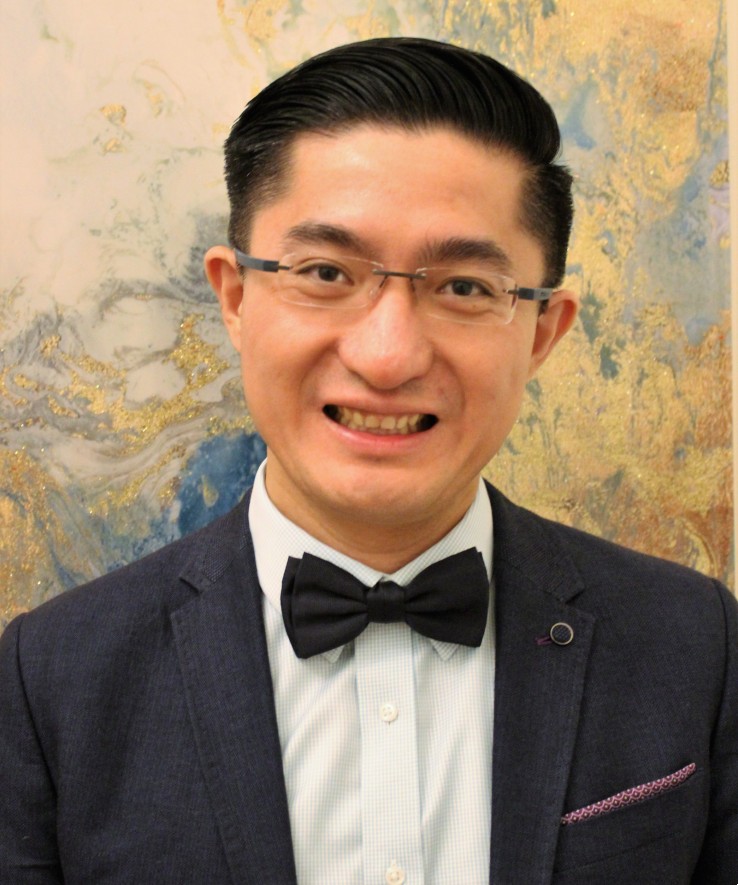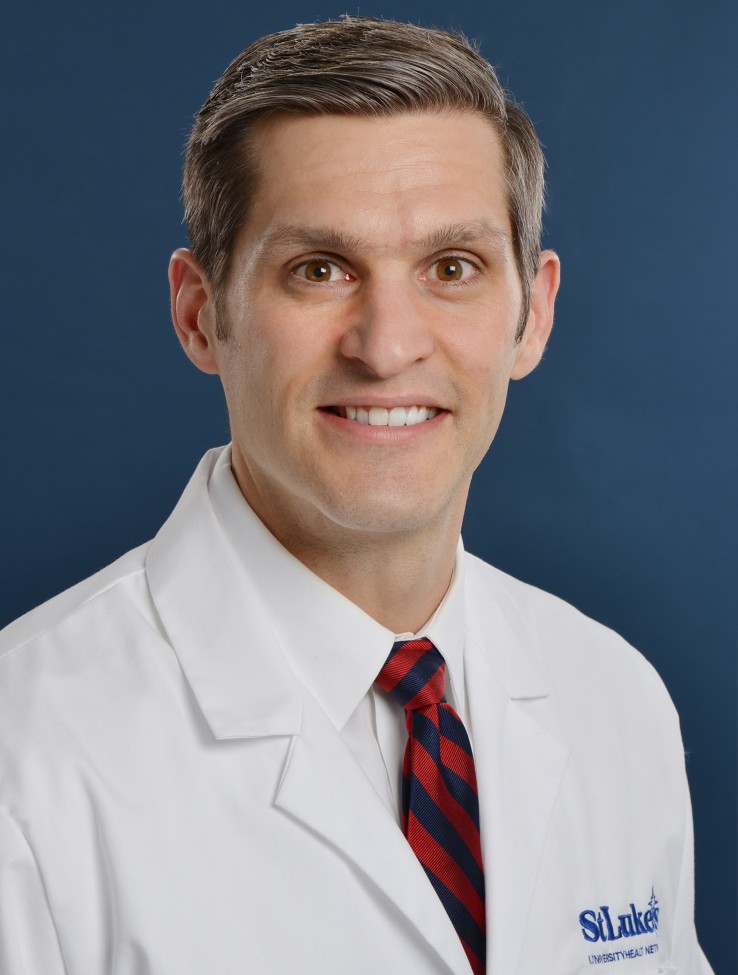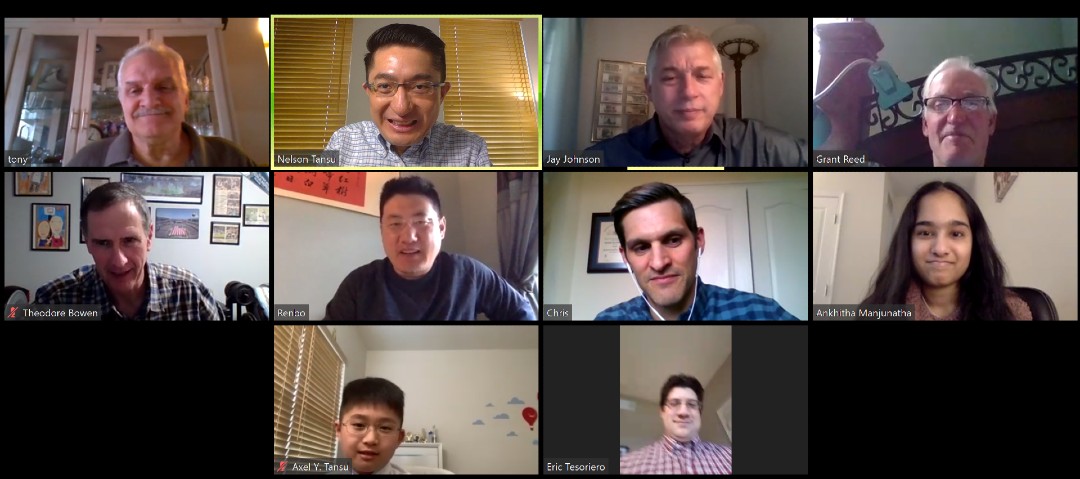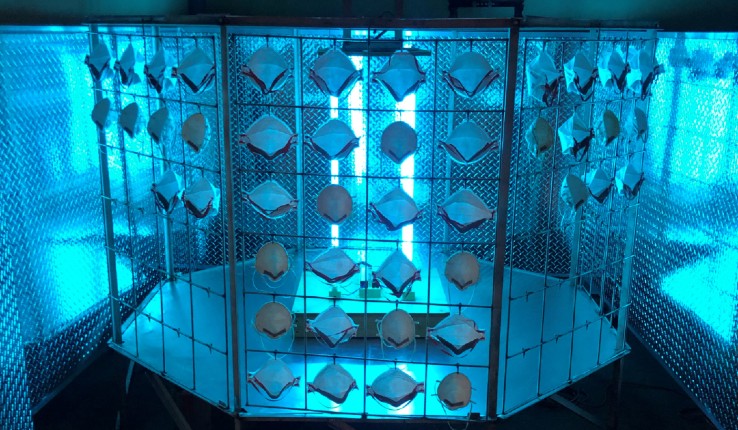The goal, says Tansu, was to use enough UV-C light to damage viruses and bacteria but retain the integrity of the N95 mask, which can be degraded more significantly over time by steam or chemicals. Staff members at St. Luke’s monitor exposures with a device called a radiometer, which measures the amount of light irradiation to which the masks are exposed, and they take care to protect their own skin and eyes when sterilizing the masks.
The team’s initial design was cylindrical in shape to ensure even exposure, but that approach would require St. Luke’s staff to individually rotate each of the 200 masks 180 degrees halfway through the exposure to decontaminate each side, says Tansu.
Tansu’s 8-year-old son, Axel, joined the project with a critical contribution to the device’s high throughput rate. He suggested that the device should have an octagonal shape instead, to allow for St. Luke’s staff to easily flip the frame on each of the eight sides to rotate the masks, rather than rotating each mask individually.
“This had a dramatic impact,” says Tansu.
The final design—a true collaborative effort—was ready in just two days.
“Everybody just kept building on the idea,” says Anthony Jeffers, a research engineer in the CPN. “It was really cool. We were on the same level all the way through: No one was a doctor or a technician or anything. We were just there to try and solve the problem.”
In an effort to maintain social distancing guidelines and avoid putting anyone at risk, the team then divided the project into individual tasks to build the device modularly. After they determined the materials they would need, team members had the materials delivered to their homes, where they worked, often in garages, on their assigned components, completing them in under five days.
“The first staff member built a certain part and the second staff member built the second part,” explains Tansu. What followed, he jokes, might have looked to an outside observer like illegal activity: Each team member dropped a part off in a specified location at a particular time and remained in his or her car to watch over it from afar until the St. Luke’s representative picked it up.
“Then after that, they assembled it like a LEGO box,” says Tansu.
St. Luke’s biomedical engineer Jay Johnson worked with machinists to assemble the unit at the hospital. “[Jay was] a really critical component of the translational piece,” says Roscher. “Basically he was the director, if Nelson and I were the writers [of the project].”
With the remote assistance of Tansu and his team, the team at St. Luke’s conducted tests to determine the appropriate dose of UV-C light, as well as microbiological tests to determine the device’s effectiveness.
Then they were off and running—in record time.
“I've been in this field for a long time as an engineer and scientist,” says Tansu. “Typically we take the time from designing it, optimizing it, analyzing further, putting together an experimental plan, creating it, testing it and using it. This is a very long period, typically, especially in academia. It can take months. But this is one of the shortest times that I have seen from idea to execution of the idea to installation and testing it and using it.”
Says Jeffers: “Everybody just had a small piece of it. And then it all kind of came together in the end there. Doing it all without physically being in contact with anybody—I don't know how often that's been done in anything, to end up with what we ended up with and no two people were ever together at any point. It’s pretty awesome.”
Every contributor to this project, says Tansu, played a key role in bringing about a successful end result. “From my perspective, if we did not have two or three of the contributors in the list, the project may be delayed significantly or may not be completed in time,” he says. “We are very fortunate to have such a committed team in completing this task in such a short time.”
In addition to Tansu and Jeffers, the key participants on the Lehigh team included Theodore L. Bowen, research engineer in the ECE department; Grant Reed, research engineer in the CPN; Renbo Song, scientific manager in the CPN; Ankhitha Manjunatha, Axel Y. Tansu and Adela Gozali Yose. Dr. Eric Tesoriero, also an anesthesiologist, joined Roscher and Johnson at St. Luke’s. Alex Schiffman ’21, a student in Lehigh’s Integrated Business and Engineering (IBE) Honors Program and a relative of a St. Luke’s cardiologist, and Svetlana Tatic-Lucic, professor of electrical and computer engineering and bioengineering, played a role in connecting Roscher and Tansu. Faculty members in the CPN, including Jonathan J. Wierer, Jr., associate professor of electrical and computer engineering; Volkmar Dierolf, professor and chair of physics; and Sushil Kumar, associate professor of electrical and computer engineering; and Ivan Biaggio, professor of physics, also contributed to the initial discussion of this project.
“We are very thankful for the opportunity to help to design and build the high-throughput N95 mask sterilization system in response to the COVID-19 crisis,” says Tansu. “At the end of the day, medical professionals are the ones who are taking the high responsibility in responding to this coronavirus pandemic issue. They are at very high risk on the job, and I'm glad that our team is able to at least help a little bit in assuring them that their masks are sterilized.”


